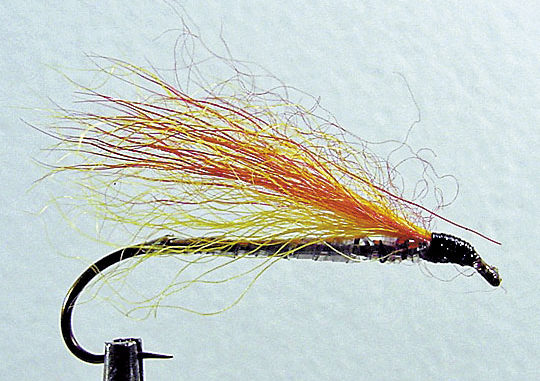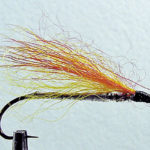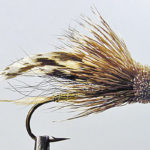
Heavy rainfall kept rivers and creeks full this summer and fall, and it appears the trend is continuing into the winter. Good for the fish, bad for the fishers.Certainly, high-water conditions limited my fall fishing. Even high-elevation streams were full and gushing, not the best conditions for floating a dry fly. Low-lying streams such as the Tuckasegee River not only get dangerously full, they get muddy from agricultural and construction runoff. After a heavy rain, the Tuck looks as if it has been flavored with chocolate milk. Such conditions don’t stir even an ardent fisher’s soul. High-gradient streams may get full and dingy after a storm, but they’re still fishable. Instead of using dry flies, I get out my box of streamers and go pool-hopping.
Streamers work especially well in high, dingy water because trout don’t have to see the fly, they hear it. The size and bulk of a streamer cause it to vibrate when it’s stripped through the water, making it easier for a trout to locate the lure. The bigger the fly, the more disturbance it creates.
The big advantage of streamers is that they attract bigger trout, especially lunker browns. As brown trout increase in size, they depend less on insects and more on forage fish for sustenance. Most streamers are designed to simulate typical forage fish found in mountain streams such as dace, darters, chubs, sculpins, shiners and even small trout.
Most mountain fishers limit their streamers to four traditional patterns: muddlers, hacklewings, bucktails and zonkers. Muddler patterns usually have large heads made of clipped deer body hair. Hacklewings have wings of long hackle feathers. Bucktails have wings made from deer or similar animal hair or synthetics. Zonkers have a strip of soft fur tied along the top of the hook. Brightly-colored streamers can be used as attractors, but they don’t get as many strikes as forage fish imitations.
Veteran fly-tiers say the best way to fish with a streamer is to try to imitate the live version of the pattern you are using. A shiner imitation, for example, should simulate the darting patterns of a real shiner. To get this effect, strip the line in about 6-inch increments, pulling it across the current.
For a sculpin pattern, strip the line in shorter pulls, about four inches, and let the lure drop to the bottom and sit for a few seconds before stripping it again.
For best results, cast a streamer upstream, let it sink, then begin your retrieve, using short jerks alternating with long, steady pulls. Try to get the streamer close to overhung or grassy banks, places where big trout tend to lie. Also, you can let swift water work for you by keeping the streamer in the current and letting it sweep and swirl naturally.
Pools can be fished by either letting the streamer sink or twitching the lure across the surface, pausing occasionally to simulate a struggling insect or minnow. If you are fishing near logs, rocks or other obstructions, let the streamer wave in the current for a few seconds before moving to another spot.
Streamers can be fished with floating or sinking lines, and weight can be added to get a streamer down into deep pools. A weighted streamer will dip between jerks, giving the lure an erratic motion that suggests an injured minnow, something a big brown will find irresistible.
Presentation is not as critical in streamer fishing as it is in dry-fly fishing, and it’s much easier to detect a hit than in nymph or wet-fly fishing. Also, when a large trout hits a streamer, the big hook (usually 1/0 to 10) will hold it. Heavier tippets are needed in case you do snag a big brown.
A few streamers added to your fly box will allow you to fish in most any type of water conditions.
Recommended patterns are Muddler Minnow, Mickey Finn, Black-Nosed Dace, Hornberg, Spruce Fly, trout imitations, and the old standard, Woolly Booger.
Recommended hatch patterns for January and February: Nos. 20-18 Olive Midge, No. 16 Dark Caddis, No. 14 Dark Stone, Nos. 16-14 Blue Dun and No. 16 Blue-Winged Olive. Good attractor patterns are Nos. 16-14 male Adams, No. 14 Adams Caddis, Nos. 16-14 parachute Adams, Nos. 14-12 Thunderhead, No. 12 Bucktail Caddis and Nos. 16-12 Royal Wulff.
Recommended nymph patterns include No. 10 My Pet, Nos. 14-12 Pheasant Tail, Nos. 14-10 Hare’s Ear, Nos. 12-10 Zug Bug, No. 8 olive, black or brown Woolly Booger, No. 10 Stickbait and Nos. 12-10 Prince.






Be the first to comment